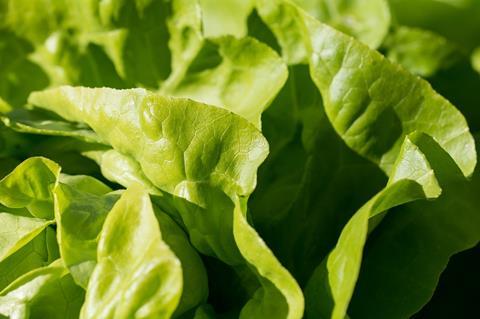Climate change will increase the risk of the foodborne illness from Salmonella enterica, according to a new study. The research was published in Applied and Environmental Microbiology, a journal of the American Society for Microbiology.

S. enterica causes disease in 1.2 million people in the United States every year. In recent years, the most common route of infection has been the consumption of contaminated fresh produce. Salmonella survives on multiple agricultural crops and persists in the soil for extended periods of time. On plants, researchers have found that Salmonella exploits changes to the plant environment imparted by other organisms. Plants infected with bacterial phytopathogens (organisms that cause disease in plants) result in increased persistence for this human enteric pathogen.
READ MORE: Rapid platform uses plant sentinel response to detect foodborne pathogens
READ MORE: Sanitized ready-to-eat salad may contain disease-causing bacteria
“It’s not surprising that a host is altered by disease. What’s interesting is how these changes affect other members of the bacteria community, in addition to the pathogen causing the disease. Furthermore, the impact of increased humidity on healthy plants also supported Salmonella’s survival on plants, which would make climate change a food safety issue,” said corresponding study author Jeri Barak, Ph.D., a professor in the Department of Plant Pathology, University of Wisconsin-Madison. “Controlling plant disease such as bacterial leaf spot of lettuce is also important for food safety. Climate change will increase the risk of foodborne illness from consumption of raw produce.
Threat to leafy green production
Bacterial leaf spot caused by Xanthomonas hortorum pv. Vitians is a common threat to leafy green production. In the new study, the researchers set out to investigate whether the fate of Salmonella is impacted by humidity or by timing of arrival during disease progress of bacterial leaf spot.
The researchers conducted experiments with lettuce with bacterial leaf spot and Salmonella. The experiments varied the days when plants were infected with X. Vitians and when S. enterica arrived in a water droplet on the leaf to mimic arrival via irrigation or splash dispersal from the ground. The researchers also varied high and low humidity periods and how many days they waited after Salmonella was introduced to measure the internal Salmonella population. These are Salmonella cells that have moved from the leaf surface to the leaf interior, where the bacteria is safe from solar UV exposure or post-harvest sanitization treatments.
Timing of arrival
The researchers found that bacterial leaf spot of lettuce caused by X. vitians can promote Salmonella survival and internalization within romaine lettuce. Salmonella’s success is dependent on the timing of arrival during infection with bacterial leaf spot.
If it arrives too early in bacterial leaf spot infection, the plant defense raised against the plant pathogen limits Salmonella growth and survival. Too late, and the host environment has succumbed to the plant disease which also curtails Salmonella growth and survival. High humidity exposure and the water-soaking symptom caused by X. vitians also enhance the ability of Salmonella to rapidly grow in lettuce, and climate change is predicted to increase humid periods.
Topics
- Agriculture
- Bacteria
- bacterial leaf spot
- bacterial phytopathogens
- Climate Action
- Contamination routes and survival mechanisms in food production environments
- Food Security
- Healthy Land
- Jeri Barak
- lettuce
- One Health
- Research News
- Salmonella enterica
- Soil & Plant Science
- University of Wisconsin-Madison
- USA & Canada
- Xanthomonas hortorum pv. Vitians







No comments yet